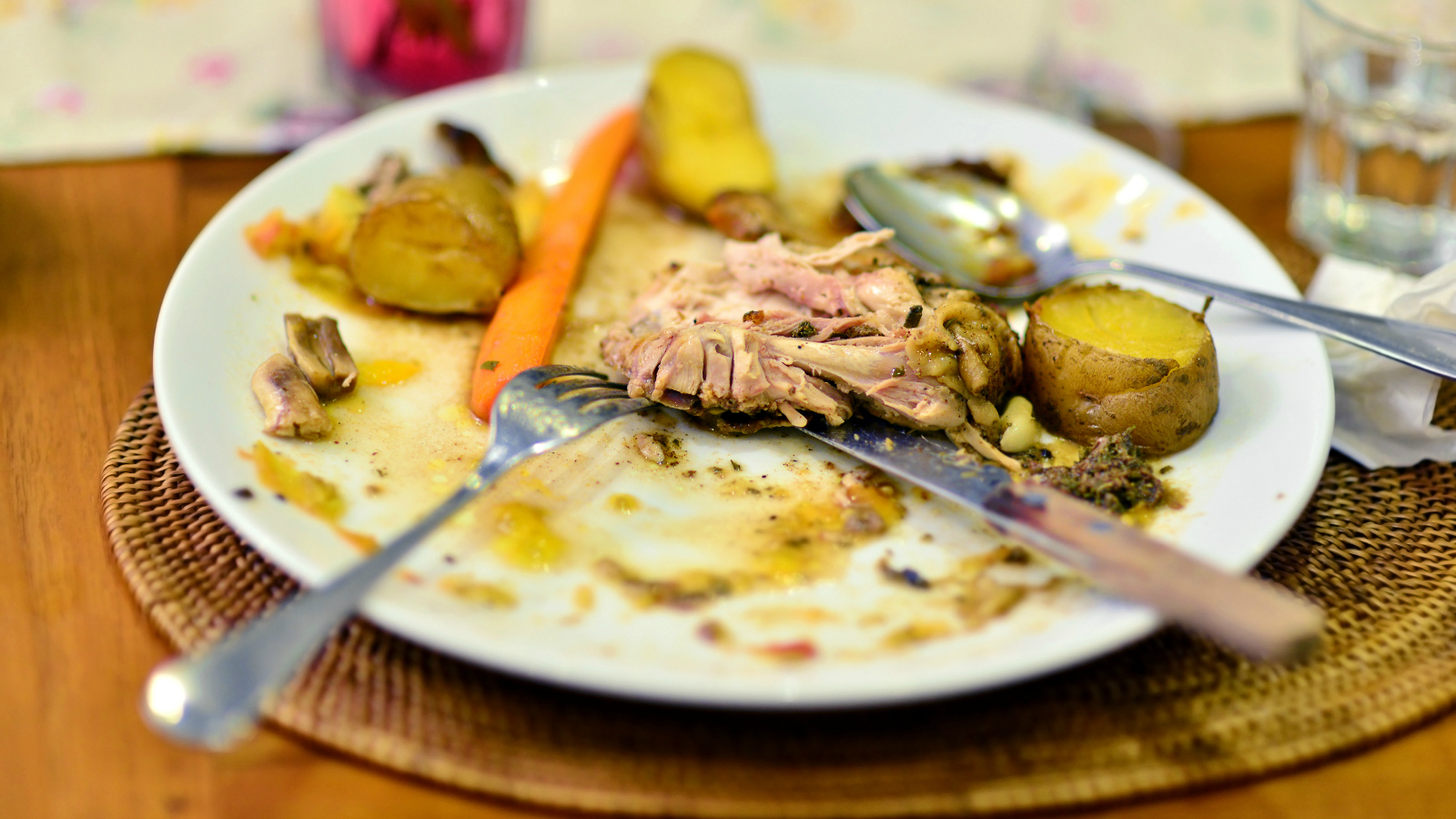Q. Dear Umbra,
When disposing of food waste, what’s better: putting it down the garbage disposal, or disposing of it in the solid waste stream? I know my water treatment plant incinerates solids, and my waste provider landfills its waste. Which uses less energy?
Jake
Worcester
A. Dearest Jake,
This is the kind of question we face multiple times every day, but I daresay it’s especially timely this season. Soon enough, we’ll all be poised over our collective sinks, scraping forks at the ready, wondering what to do with all those turkey carcasses, potato skins, and Aunt Mildred’s leftover brussels sprouts. Garbage disposal? Garbage? Feed it all to the dog? What’s a conscientious eater to do?
You probably already know this, Jake, so at the risk of being repetitive: The very best option is none of the above. First and foremost, let’s do all we can to prevent that waste from happening in the first place. Perfectly good food that ends up tossed away is a waste of the land, water, and resources required to grow and transport it to your kitchen. After that, composting should be our next choice: It keeps waste out of the landfill and the incinerator, plus it transforms our throwaways into a rich, nourishing soil amendment (for free!). In short: Compost rules. Think it’s hard? It’s not! Don’t have the space or permission to pull it off? There are options for you!
But I get it. Maybe you’re dealing with food waste that can’t be composted in the backyard — your bones, fats, and gristles. Or maybe, for whatever reason, you’re waiting until next spring to get your compost in gear. In those cases, we need to look at our less-awesome alternatives, the garbage disposal and the trash. And here, much depends on your local facilities.
When you throw food waste in the garbage, it often makes its way to a landfill. That’s problematic because oxygen is in short supply deep in those pits, which means organic materials release lots of climate-warming methane as they decompose. It is possible to capture that methane and burn it for electricity or heat — a much better outcome than letting it waft into the atmosphere. But not all landfills do this, sadly.
On the other hand, when you wash those kale ribs or orange peels down the garbage disposal, they ride the waterslide of our municipal plumbing system (or septic tank, but you should be careful about that). There, they’re filtered out and bacteria have at ‘em, converting the stuff into a concentrated substance called biosolids. What happens next is key: In some places, those biosolids just get tossed into the landfill. In others, biosolids get new life as fertilizer, compost, or tools used in reclaiming old mines and gravel pits. And in some — such as your neck of the woods, Jake — they’re burned. So if you readers haven’t already done your homework like Jake here, your first order of business is researching your local facilities to find out what’s going down near you.
Recycling those biosolids through compost or fertilizer (also called beneficial use, go figure) is the best ending to this story — and happily, what happens about 60 percent of the time. The stuff is a valuable soil additive, and besides, waste is a terrible thing to waste. So if your wastewater treatment plant does this, the garbage disposal is your best bet. On the other hand, if it does not, but your landfill captures methane, the garbage might be better. This is a good time to mention that garbage disposals use water and energy, too.
Things get tricky when your wastewater plant incinerates biosolids, though. On the pro side, burning it cuts down the volume by up to 80 percent (the leftovers go to, you guessed it, the landfill). And the resulting emissions can still be captured to produce power. On the con side, incineration uses energy and produces more carbon emissions than bacterial digestion, plus it pollutes the air. So in the disposal-to-incinerator-vs.-landfill question, we’re left with only imperfect solutions.
What are we to do? Do all we can to slash food waste, and then compost — that’s what. And whatever scraps are still left over, I’d hold my nose and throw them away. Not perfect, but little in this mixed-up, crazy world is. Let’s do good where we can.
Optimistically,
Umbra


